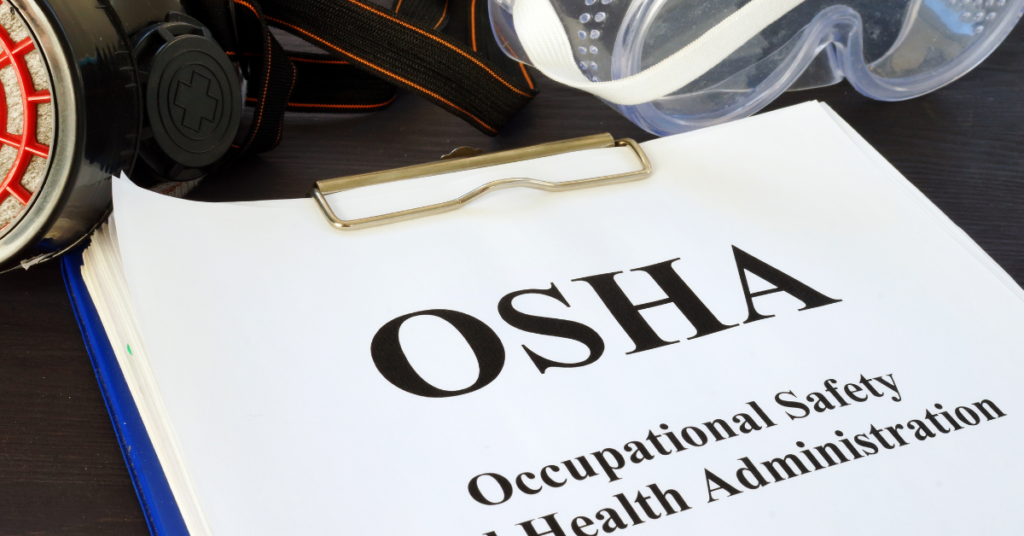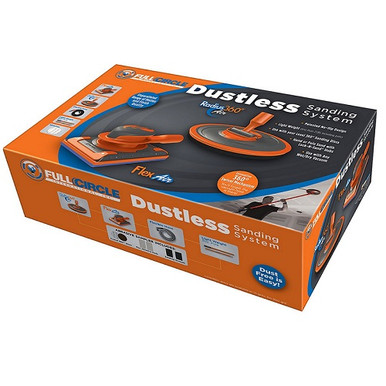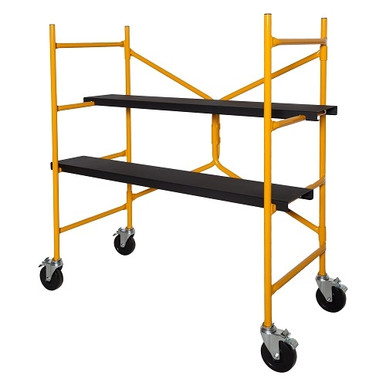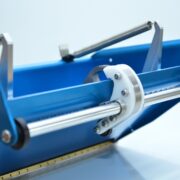
Drywall finishing is a rewarding profession, but it can also be a hazardous one if safety precautions are not taken seriously. As a drywall finisher, you are exposed to various hazards such as dust, toxic chemicals, and sharp tools. Therefore, it’s important to prioritize safety and take steps to mitigate any potential risks. In this blog, we’ll share expert tips for staying safe on the job as a drywall finisher. Whether you are new to the profession or have been working in the industry for years, these tips can help you avoid common accidents and injuries while on the job.
Understanding The Occupational Hazards of Drywall Finishing
Drywall Finishing, like most skilled trades in construction, is a labor-intensive process that involves activities such as lifting, mixing, taping, mudding, and sanding. These activities require a full range of body motion which can lead to a variety of injuries. Some of the most common injuries that drywall finishers may experience include:
Respiratory Problems
According to the Center for Disease Control, “A recent NIOSH Health Hazard Evaluation (HHE) found that drywall sanders were exposed to as much as 10 times the permissible exposure limit (PEL)…for total dust set by the Occupational Safety and Health Administration (OSHA). The OSHA PEL for respirable dust, the very small particles that can go deep into the lungs, was also exceeded.”
As a drywall finisher, you may be exposed to dust and other airborne particles that can cause serious respiratory issues over time. Therefore, it’s extremely important to take steps to prevent such issues while on the job. Here are some ways a drywall finisher can prevent respiratory problems by breathing in drywall joint compound dust:
- Wear proper respiratory protection: Wear a respirator that is appropriate for the level of dust and other particles in the air. Make sure the respirator fits properly and is worn correctly.
- Use dust control methods: Use methods such as wet sanding or vacuum sanding to minimize dust in the air. Use dust barriers to contain the dust in the work area.
- Ventilate the work area: Ensure that there is adequate ventilation in the work area. Use fans or open windows and doors to increase air flow and reduce the concentration of airborne particles.
- Use proper cleanup methods: Use proper cleanup methods, such as wet sweeping or vacuuming, to clean up dust and debris from the work area.
- Get regular checkups: Get regular checkups to monitor your respiratory health. Report any respiratory symptoms, such as coughing or wheezing, to your healthcare provider.
You can access the OSHA safety guidelines for more information on how to prevent respiratory problems. Additionally, OSHA provides resources such as fact sheets, frequently asked questions, and training materials to help employers and workers understand and comply with the standard.
Full Circle AIR Complete Dustless Sanding System
The Full Circle AIR Complete Dustless Sanding System features: Patented Pivot Joint Under 2 lbs. including pole 98% dust free Uses the same discs as the Radius360 Works with a wide variety of shop vacs Center hub quickly converts between hand or pole sander The FlexAir Design features: No flip design Under 2 lbs. including pole Works with a wide variety of shop vacs Center hub quickly…
Eye Injuries
As a drywall finisher, your eyes are at risk of being injured from flying debris, dust, and chemicals. Therefore, it’s important to take the necessary steps to protect your eyes while on the job site. Here are some ways you can protect your eyes:
- Wear protective eyewear: Always wear safety glasses or goggles that meet ANSI standards. They should fit snugly around your eyes and provide adequate coverage.
- Use a dust mask: Wear a dust mask to prevent dust and debris from getting into your eyes.
- Keep the work area clean: Make sure the work area is clean and free of debris. Use a vacuum or wet mop to remove dust and debris.
- Use proper lighting: Proper lighting can reduce eye strain and help you see any potential hazards.
- Avoid rubbing your eyes: If your eyes become irritated, avoid rubbing them as this can cause further damage.
By following these tips, you can protect your eyes and avoid potential eye injuries while working as a drywall finisher.
Hearing Loss
Another common occupational hazard for a drywall finisher is hearing loss. Regular exposure to loud noises on the job can lead to hearing loss over time. Therefore, it’s important to take steps to protect your ears. Here are some ways a drywall finisher can prevent hearing loss:
- Wear earplugs or earmuffs: Use earplugs or earmuffs that are designed to reduce the level of noise that enters your ear. Make sure they fit properly and are comfortable to wear.
- Limit exposure to loud noise: Try to limit your exposure to loud noise as much as possible. If you are working in a noisy area, take breaks to give your ears a rest.
- Use sound barriers: Use sound barriers, such as acoustic curtains or sound-absorbing materials, to reduce the level of noise in your work area.
- Maintain your tools and equipment: Make sure your tools and equipment are well-maintained and in good working order. Faulty equipment can produce excessive noise levels that can be damaging to your hearing.
- Follow OSHA guidelines: Follow the guidelines set forth by the Occupational Safety and Health Administration (OSHA) for hearing protection on the job site.
You can access the OSHA safety guidelines to learn more about how to prevent hearing loss in working conditions. OSHA has a specific standard, 29 CFR 1910.95, Occupational Noise Exposure, that covers noise exposure and hearing conservation in the workplace. This standard outlines requirements for employers to identify and evaluate workplace noise hazards, provide hearing protection to workers, and establish a hearing conservation program.
Back and Joint Pain
As a drywall finisher, you may be required to work in awkward positions, use heavy equipment, and lift heavy loads, which can lead to back and joint pain. Therefore, it is important to take steps to prevent such pain while on the job site. Here are some ways a drywall finisher can prevent back and joint pain:
- Use proper lifting techniques: When lifting heavy loads, use your legs and not your back. Bend your knees and keep your back straight. Use lifting aids, such as carts or dollies, whenever possible.
- Take breaks: Take regular breaks to stretch and rest. This can help prevent muscle fatigue and reduce the risk of injury.
- Use ergonomically-designed tools and equipment: Use tools and equipment that are designed to reduce strain on your back and joints. For example, use lightweight tools or tools with ergonomic handles.
- Maintain good posture: Maintain good posture while working. Avoid slouching or bending your back for extended periods of time.
- Exercise regularly: Regular exercise can help strengthen your back and joints, which can reduce the risk of injury.
Automatic drywall tools are specially designed to minimize unnecessary repetitive movement. Their ergonomic designs enable a drywall finisher to tackle more work in less time with a fraction of the effort required.
Tapepro Max Set
The Tapepro Max Set includes every automatic taping and finishing tool you need to complete an entire house. This set is fully customizable, allowing you to create the perfect set for your needs. This set includes your choice of the following: Automatic Taper Corner Roller and Handle Corner Box and Handle 1st Corner Finisher 2nd Corner Finisher Corner Finisher Handle 1st Flat Box 2nd Flat…
Hand and Wrist Injuries
As a drywall finisher, you use your hands and wrists extensively to apply joint compound and sand surfaces with a variety of hand tools. This repetitive motion can lead to hand and wrist injuries over time. Therefore, it is important to take steps to prevent such injuries while on the job site. Here are some ways a drywall finisher can prevent hand and wrist injuries:
- Use proper technique: Use proper technique when applying joint compound and sanding the surface. Avoid applying too much pressure or using awkward wrist positions.
- Use ergonomic tools: Use tools with ergonomic handles that reduce strain on your hands and wrists. For example, use tools with padded grips or handles that are angled to reduce wrist strain.
- Wear gloves: Wear gloves that provide good grip and protect your hands from injury. Choose gloves that fit properly and are comfortable to wear.
- Take breaks: Take regular breaks to rest your hands and wrists. This can help prevent overuse injuries.
- Stretch: Stretch your hands and wrists before and after work. This can help reduce muscle tension and prevent injury.
By following these tips, you can help prevent hand and wrist injuries and protect your overall health while working as a drywall finisher.
Foot Injuries
It’s common for a drywall finisher to spend an average of 40 to 50 hours a week on their feet while working on the job. This is greatly effected by the size of the project, the complexity of the job, and the individuals working style. But as a drywall finisher, you may be required to work on your feet for extended periods of time, which can lead to possible foot injuries. Therefore, it is important to take steps to prevent such injuries while on the job site. Here are some ways a drywall finisher can prevent foot injuries:
- Wear proper footwear: Wear shoes or boots that provide good support and are comfortable to wear. Choose footwear with slip-resistant soles to prevent slips and falls.
- Use anti-fatigue mats: If possible, use anti-fatigue mats or padded footing to reduce the impact on your feet and legs. These mats provide cushioning and can reduce muscle fatigue.
- Take breaks: Take regular breaks to rest your feet and legs. This can help prevent overuse injuries.
- Use ladders and scaffolding properly: Use ladders and scaffolding properly to prevent falls and other foot injuries. Make sure they are secure and stable before using them.
- Keep the work area clean: Keep the work area clean and free of debris. This can reduce the risk of foot injuries caused by tripping or stepping on sharp objects.
By following these tips, you can help prevent foot injuries and protect your overall health while working as a drywall finisher.
Perry Portable 4 ft. Step-Up Mini Work Platform by Nu-Wave
Perry Portable 4 ft. Step-Up Mini Work Platform by Nu-Wave Quality built in U.S.A. Small, lightweight, sturdy and collapsible. Folds down to just 5-1/4″ Wide – easily lay flat in seconds. Includes two heavy duty platforms (4′ wide by 8.5″ deep.) The Scaffold has four rungs on which the Platforms can rest at 1, 2, 3 and 4 ft. Platforms can be either offset (i.e., One platform at 2 ft. and one platform at 4…
Conclusion
When it comes to drywall finishing, it’s important to prioritize safety while on the job site to prevent injuries and protect your overall health. By implementing the expert tips outlined in this blog, you can ensure that you’re working in a safe and healthy environment. Remember to always follow OSHA guidelines, use proper technique, take regular breaks, and wear appropriate protective gear. By taking these precautions, you can enjoy a long and successful career as a drywall finisher while keeping yourself safe and healthy!
Want to learn more about how automatic drywall tools can help you achieve safer working conditions? Check out our recent blog post Are Automatic Drywall Tools Worth It? for an in-depth look at when and why it might be time to go automatic. We also recommend How to Add Automation to Your Drywall Routine where we break down practical ways to add automatic tools to your workflow.





